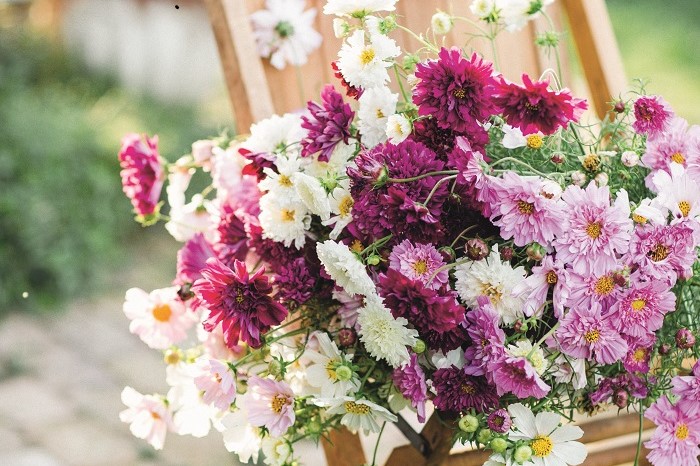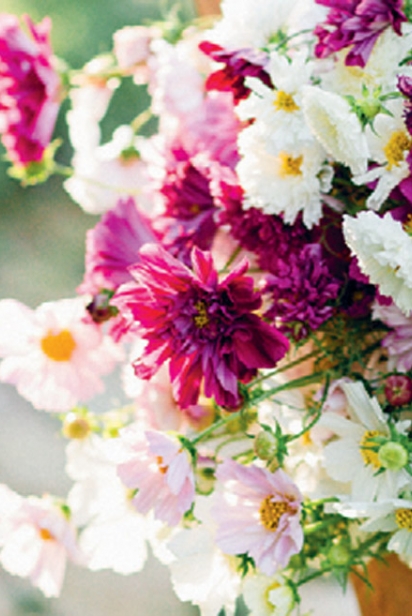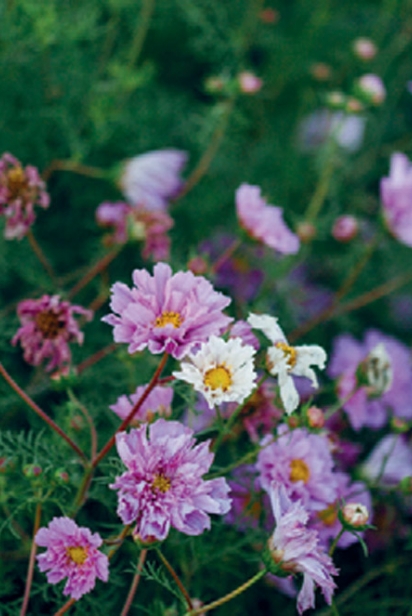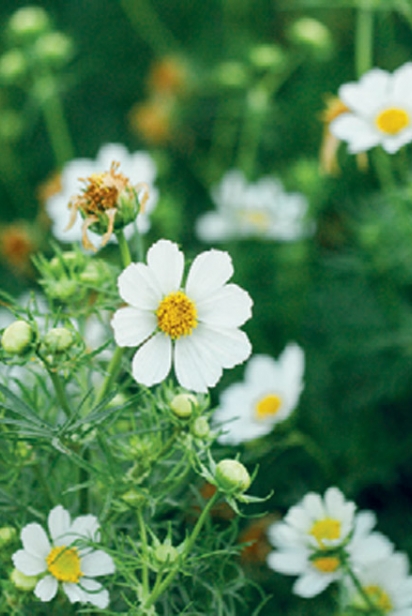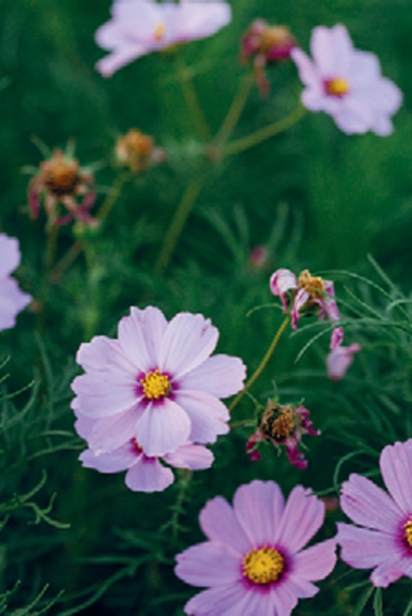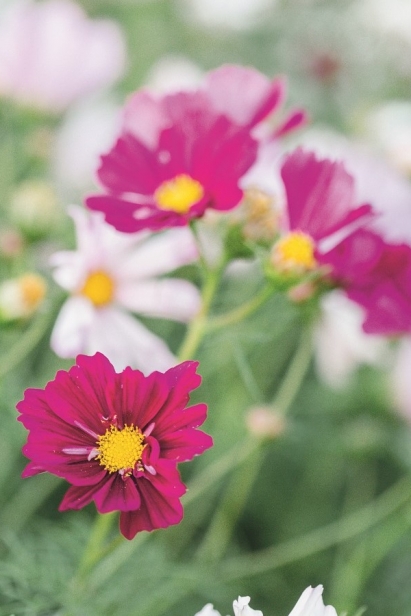Cut Flower Garden: The Abundant Cosmos
Of all the annual plants you can grow in your cutting garden, none are more productive than cosmos.
Using local blooms and other materials when they’re in season, at their most abundant, will give you the most luscious, beautiful bouquets. Each season has its stars. As summer arrives, with it come garden roses, lilies, and all of the cheerful warm weather lovers such as zinnias, cosmos, and dahlias. By looking to nature for cues, flower lovers can savor the best of the bounty by enjoying each bloom while it’s at its peak.
Of all the annual plants you can grow in your cutting garden, none are more productive than cosmos. They truly are a cut-and-come-again flower: the more you harvest them, the more they bloom. A single planting will produce buckets and buckets of airy, delicate, daisy-like blossoms for many months. You can arrange them on their own or weave them into mixed bouquets. The possibilities are endless.
HOW TO GROW
There really is no easier plant to start and grow than cosmos. Sow seeds about 4 weeks before the last spring frost, then plant seedlings into the garden once all danger of frost has passed. Be careful not to sow seed too early, because seedlings will quickly outgrow their pots before the weather has warmed enough to put them out into the garden. These plants get very bushy and prefer a little extra room to spread out, so space plants 12 to 18 inches apart. Once in the ground, cosmos will grow rapidly, so be sure to stake or net them early, while they are still young. Cosmos also benefit from pinching, as this will encourage the already highly productive plants to branch even more vigorously. I do this when plants are 12 inches tall, taking out the top few sets of leaves. To prolong their flowering time, keep cosmos harvested and deadheaded regularly, before they set seed.
FAVORITE VARIETIES
I typically do two sowings, a month apart, and include some of my favorites listed here. This gives me a wide range of flower types and loads of blooms for cutting from summer into fall.
VASE LIFE TRICKS
The individual blooms of cosmos don’t last a particularly long time in the vase, about 4 to 6 days, but each stem is loaded with multiple blossoms that open individually over a period of a week. Harvest when the buds are colored but haven’t opened up yet; this will keep insects from pollinating them and help stretch the vase life by a few additional days. Use floral preservative in the vase water.
Excerpt from Floret Farm’s Cut Flower Garden by Erin Benzakein with Julie Chai, photos by Michèle M. Waite. Reprinted with permission by Chronicle Books, 2017.


